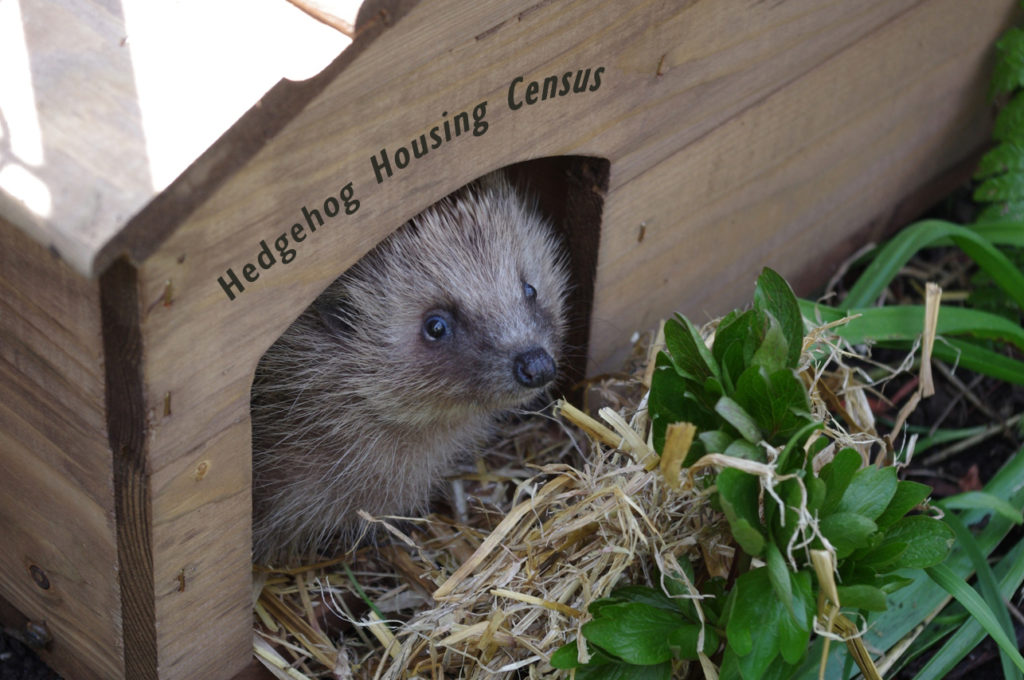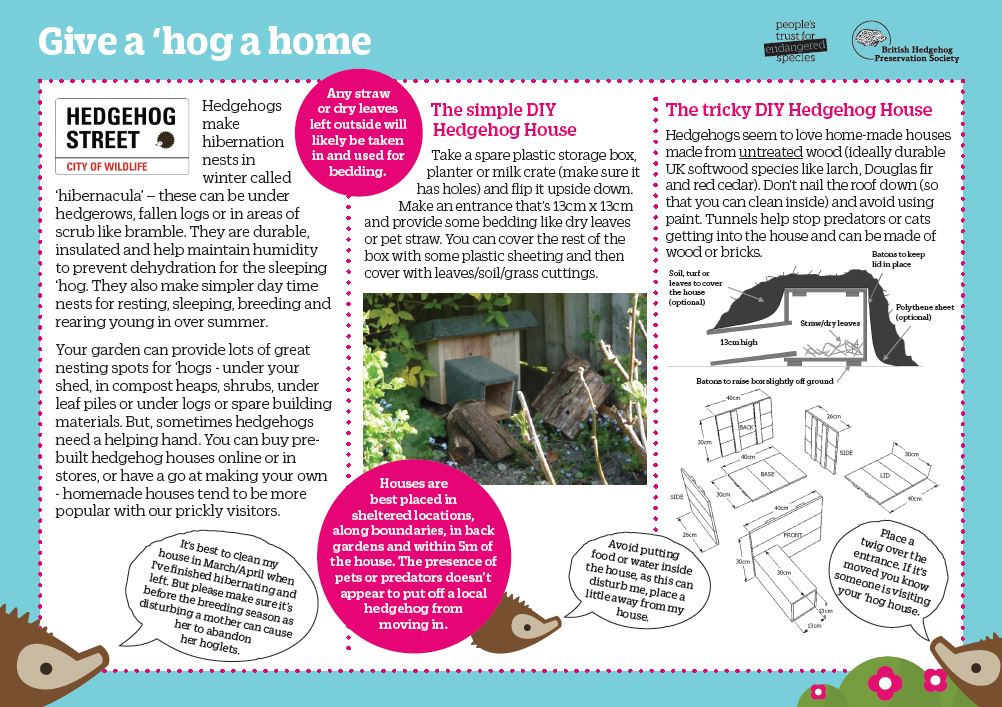Hedgehog Housing Census
The results are in!

Firstly, thank you to all of you who took part in our survey last year. The team at the University of Reading analysed over 5000 survey results and now the secrets to creating a hedgehog’s perfect home are revealed…
- 81% of survey respondents* found that hedgehogs used the house for resting, 59% for hibernation and 28% for breeding
- Hedgehogs actually prefer homemade houses, but artificial houses are still a good alternative
- Hedgehogs need time to get used to a new house before they use it
- Feeding hedgehogs in your garden & providing bedding increases the chances of a resident hedgehog moving in
- Hedgehogs prefer houses found in back gardens, in sheltered spots
- Pets or badgers don’t appear to put off a ‘hog from moving in
*The survey respondents were those that responded to questions about usage for resting, breeding or hibernation only. Some participants skipped this question in the survey.
Give a ‘hog a home
In the wild, hedgehogs make nests in winter to hibernate in called ‘hibernacula’ – these can be under hedgerows, fallen logs or in areas of scrub like bramble. They are durable, insulated and help maintain humidity to prevent dehydration for the sleeping ‘hog. They will also make simpler day time nests for resting, sleeping, breeding and even rearing young in over the summer.
Your garden can provide lots of great nesting spots for ‘hogs – under your shed, in compost heaps, shrubs, under leaf piles or under logs or spare building materials. But, sometimes hedgehogs need a helping hand. You can buy a range of pre-built hedgehog houses online or in store, or more popular with our prickly visitors tend to be homemade houses. Download our DIY hedgehog house instructions here to make a simple hedgehog friendly house.


